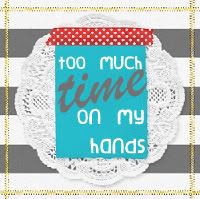Wednesday, June 16, 2010
Gulf Oil Spill on my Seafood?
Eating Well Magazine published an interesting interview with Carl Safina, a marine biologists and co-founder of the Blue Ocean Institute, about the effects of the Gulf oil spill on seafood.
See some extracts of the interview below.
EW: Do I need to be worried about eating oil-contaminated fish?
CS: No. The federal government has closed the Gulf Coast fisheries that are near the oil spill so you can’t even get seafood from there now and all seafood from the Gulf is being closely inspected.
EW: I’ve read that the Gulf Coast produces 40 percent of all the seafood harvested in the lower 48. What does the spill mean for our seafood supply?
CS: I flew over the spill last week and it covers the horizon as far as I could see. I had no idea how big it would be—just thousands of miles of ocean covered in oil. Fishermen are stunned. Louisiana’s commercial fishing industry was a $2.5 billion business and provided much of the domestic shrimp and oysters we eat. Right now, more than a third of the Gulf’s federal fishing waters are closed to fishing and it may take a year for that area to fully open again. Some areas, like oyster beds, may take much longer to recover.
EW: What’s going to happen to all the famous Louisiana seafood dishes?
Many popular dishes will change because the availability of fresh local shrimp and oysters will drop, but crawfish, tilapia and catfish are farmed in freshwater pens so you can still use them in dishes like gumbo.
EW: What ocean fish are going to be most affected?
We don’t know exactly yet, but after the Exxon Valdez disaster in 1989, 40 percent of the area’s killer whales died within a few months and the herring population is still affected. The Gulf is one of two spawning areas (along with the Mediterranean) for the threatened bluefin tuna and is also a breeding ground for sperm whales and dolphin. Groupers, snappers and fish that live on coral reefs are also going to be impacted. And the world's most endangered sea turtle comes into the Gulf to reach its only breeding area. Thousands of miles of marshes, where crab, shrimp and fish lay their eggs are also going to be covered in oil for some time with no real way of cleaning the marshes up without doing further damage.
EW: What’s the best thing that we as consumers can do to help?
CS: As I wrote in my EatingWell article, “Sea Change,” just simply choosing fish that are smaller than your plate is one of the best things you can do for both your own health (smaller fish accumulate fewer toxins, such as PCBs or mercury, than larger ones) and for the environment, since they reproduce more quickly.
The number one food you should be eating and probably are not is sardines. Other great choices are mussels, which are farmed sustainably on both the Atlantic and Pacific coasts, or wild Alaskan salmon.
Sources: By Lisa Gosselin, Eating Well Magazine, Shine Publication
Subscribe to:
Post Comments (Atom)















No comments:
Post a Comment